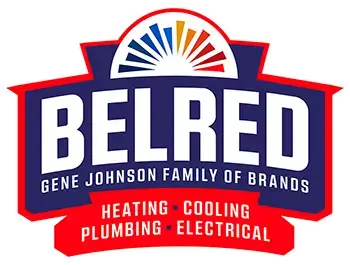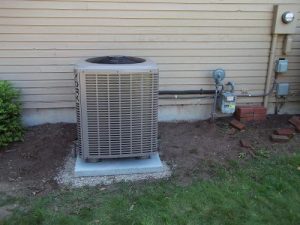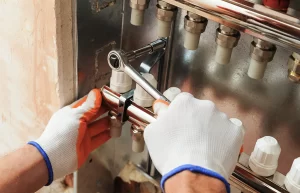As you probably know well if you’re a homeowner, humidity inside the home can be a tricky thing to manage. Humidity can vary greatly by external environment, home age and style, heating and cooling system variations, and much more. On top of those factors, each can present a difference in and of themselves depending on the season during the year. Each humidity factor has its own unique challenges when it comes to humidity management in the home. In this post, we’ll provide some reminders on how to keep the humidity inside your home at a proper level for our area.
The measurement of this humidity is called relative humidity (RH). Ideally, a home’s relative humidity (RH) should be in the range of about 30% to 50%. For many, the summertime problem is keeping the RH low enough. Homes often get too damp, especially without proper air ventilation.
In some areas of the country, the opposite sometimes holds true in the winter, when it’s often difficult to keep the RH inside a home at a high enough level to fall within the ideal range mentioned above. Even in humid climates, the air in homes can get too dry (meaning the RH is too low), resulting in uncomfortable problems such as excessive static electricity, dry skin or respiratory issues.
However, in the Pacific Northwest, the average RH is very high on average. This fact is often disguised and unknown to many homeowners because homes can feel deceptively dry when heat sources are running during the cold winter months. People often think of the Pacific Northwest as being damp, humid and cool at all times. Just because the air feels dry from the heat doesn’t mean the relative humidity is too high. This deception often causes homeowners to install humidifiers to take care of that dry feeling. Rather than resolving a problem, they could in fact actually be adding to the issue and making the inside of the home even more humid.
If the relative humidity inside the home is truly too low, there may be a larger issue at hand. It’s imperative to remember that cold air equals dry air. In the winter, air leakage is a huge culprit of low RH inside the home because cold air gets into the home through cracks and leaks. When this occurs, the home becomes dry. Naturally, homeowners decide to install a humidifier to increase the relative humidity in their home. While this may be a temporary fix, it is not solving the root problem of air leakage. In this case, humidifiers are just acting as band-aids to the problem.
Reducing or eliminating air leakage can make relative humidity management much, much easier in your home—and can potentially eliminate the need to install or purchase and expensive humidifier. Not only will this make you and your family much more comfortable, sealing air leaks will also make your home more efficient, saving you money in the long run on expensive energy bills.
By having a chat with a qualified home contractor like BelRed, you will be able to determine whether humidification is necessary to properly manage RH levels inside and keep your home comfortable.







